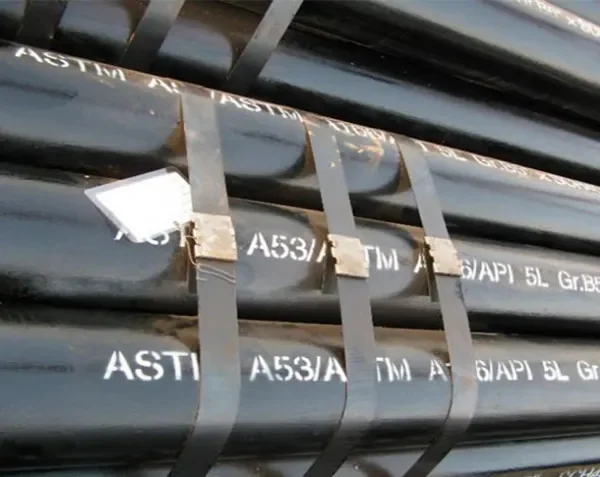Weld treatment of ERW steel pipe
ERW steel pipe(a53b erw)is based on the principle of electromagnetic induction and the skin effect, proximity effect and eddy current heating effect of the electric charge, so that the steel at the edge of the weld is locally heated to a molten state, and the butt welding is achieved through the extrusion of intergranular bonding, so as to achieve The purpose of welding.

1. Control of weld gap
The strip steel is sent to the welded tube unit and rolled by multiple rolls, the strip steel is gradually rolled into a round tube blank with an open gap, and the compression degree of the squeeze roll is adjusted to control the welding gap between 1 and 3 mm. And make the welds flush. If the gap is too large, the proximity effect will be reduced, the eddy current will be insufficient, and the intergranular joint of the weld will be poor, resulting in non-fusion or cracking. If the gap is too small, the proximity effect will increase, and the welding heat will be too large, which will cause the weld to burn, otherwise, the weld after extrusion and rolling will form a deep pit, which will affect the surface quality of the weld.
2. Welding temperature control
The welding temperature is mainly affected by the high-frequency eddy current heat power. According to the formula, the high-frequency eddy current heating power is mainly affected by the current frequency. The eddy current heating power is proportional to the square of the current excitation frequency, and the current excitation frequency is affected by the excitation voltage and current. And the influence of capacitance and inductance.
When the input heat is insufficient, the edge of the heated weld cannot reach the welding temperature, and the metal structure remains solid, resulting in unfused or incomplete penetration.
3. Control of extrusion force
After heating the two edges of the tube blank to the welding temperature, under the squeeze of the squeeze rollers, a common metal crystal grain is formed, so that they can infiltrate and crystallize each other, and finally form a firm weld. If the squeezing force is too small, Then the number of eutectic formed will be reduced, the strength of the weld metal will be reduced, and cracks will occur after the force is applied; if the extrusion force is too large, the molten metal will be squeezed out of the weld, which will not only reduce the strength of the weld, but also Will produce a lot of internal and external burrs.
4. Adjustment of the position of the high-frequency induction coil
The high-frequency induction coil should be as close as possible to the position of the squeeze roller. If the induction ring is far away from the pressure roller, the effective heating time is longer, the heat-affected zone is wider, and the welding strength is reduced; on the contrary, the edge of the weld is not fully heated, resulting in poor molding after extrusion.
5. After welding and squeezing, the weld will produce weld scars, which need to be removed.
The removal method is to fix the tool on the frame and scrape the weld scars by the rapid movement of the welded pipe. The burrs inside the welded pipe are generally not removed.
High-frequency welding is a kind of induction welding (or pressure contact welding), which does not require welding seam fillers and welding spatter. The welding heat-affected zone is narrow, the welding shape is beautiful, and the welding mechanical function is good. Therefore, it is widely used in the production of steel pipes.






